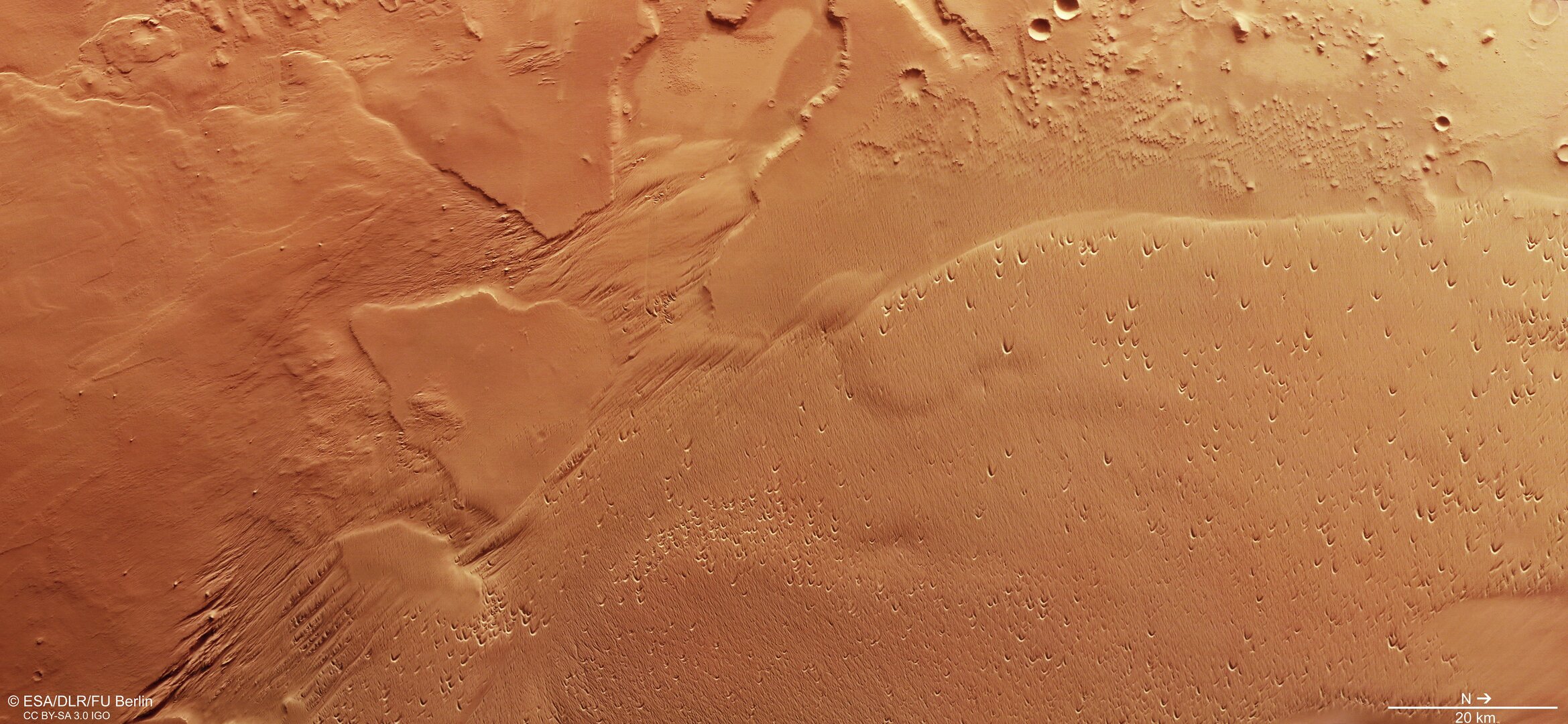A giant Mars dust pile is sculpted by the wind in this photo by a European probe

An enormous dust deposit on Mars shows the power of Martian wind in a new image snapped from orbit.
Standing on the surface of Mars is possibly the largest single dust source on the Red Planet: the Medusae Fossae Formation (MFF). Shaped and sculpted by blowing winds over time, this mound of dust and surface material stretches out over 3,100 miles (5,000 kilometers) and lies nestled between Tharsis and Elysium, the planet's most prominent volcanic areas.
In a new image, the European Space Agency's Mars Express orbiter captured the Medusae Fossae Formation in all its dusty, windy glory.
Related: Amazing Mars photos by NASA's Curiosity rover
The Medusae Fossae Formation (MFF) is named for Medusa, the Gorgon from Greek mythology who could turn anyone to stone with just eye contact. But looking at this wind-carved dust deposit won't turn you to stone (we promise).
From orbit, the MFF looks almost like an Earthly desert. But the unique marks, grooves (known as yardangs) and shapes that make up the vast feature are the work of Martian winds.
The feature is mostly smooth in appearance. But, as you can see in the lower right side of the image, the MFF's surface is speckled with small, crescent-shaped depressions.
Get the Space.com Newsletter
Breaking space news, the latest updates on rocket launches, skywatching events and more!
Scientists think that the dust and material that comprise the MFF is likely volcanic ash from the volcanoes in Tharsis nearby, according to ESA. It's thought that ash from these volcanoes was deposited through wind or what scientists call "pyroclastic flows" — fast-moving streams of lava, gas and rocky material. The Tharsis region includes Olympus Mons, the largest volcano in the solar system, among other volcanoes.
The MFF is not the only Martian feature shaped by the wind on Mars. Others include Nili Fossae, Arabia Terra, Syrtis Major, Mars' southern dunes and Schiaparelli Crater.
Email Chelsea Gohd at cgohd@space.com or follow her on Twitter @chelsea_gohd. Follow us on Twitter @Spacedotcom and on Facebook.
Join our Space Forums to keep talking space on the latest missions, night sky and more! And if you have a news tip, correction or comment, let us know at: community@space.com.

Chelsea “Foxanne” Gohd joined Space.com in 2018 and is now a Senior Writer, writing about everything from climate change to planetary science and human spaceflight in both articles and on-camera in videos. With a degree in Public Health and biological sciences, Chelsea has written and worked for institutions including the American Museum of Natural History, Scientific American, Discover Magazine Blog, Astronomy Magazine and Live Science. When not writing, editing or filming something space-y, Chelsea "Foxanne" Gohd is writing music and performing as Foxanne, even launching a song to space in 2021 with Inspiration4. You can follow her on Twitter @chelsea_gohd and @foxannemusic.









